
steem
Tuesday, March 31, 2020
Super Play (October 1995)
Super Play (October 1995)
Super Play is a magazine dedicated to the Super Nintendo that was published in the U.K. in the mid 1990s. The October 1995 issue includes:
Regulars
- Super Express
- Anime World
- Live From Hell City
- Charts
- Gamefreak
- Mode 7
- Supermarket
- Playback
- Final Fantasy Forum
- Irresponsible Pictures
- Subs/Back Issues
- Next Month
Games Revied in This Issue
- Yoshi's Island
- Killer Instinct
- Doom
- Batman Forever
- Weapon Lord
- Primal Rage
- Obelix
- Turbo Toons
- Demolition Man
- Beavis and Butthead
- Super Mario RPG
- Virtual Boy
Monday, March 30, 2020
Vintage Photos - Oestreicher (649-652)
See the previous post in this series here.
I had the opportunity to pick up a huge batch of slides a while back. These are pictures span from as early as the late 1940s to as late as the early 1990s (maybe earlier and/or later but these are what I have sampled so far). These came to me second (third?) hand but the original source was a combination of estate sales and Goodwill. There are several thousand...maybe as many as 10,000. I will be scanning some from time to time and posting them here for posterity.
Apparently, getting your pictures processed as slides used to be a fairly common thing but it was a phenomenon I missed out on. However, my Grandfather had a few dozen slides (circa late 1950s) that I acquired after he died. That along with having some negatives I wanted to scan is what prompted me to buy a somewhat decent flatbed scanner that could handle slides and negatives, an Epson V600. It can scan up to four slides at a time with various post-processing options and does a decent enough job.
This set continues a rather large batch of slides that originally came from an estate sale and appear to have belonged to a locally well known photographer (or perhaps a close family member) from the Spokane Washington area and later Northern Idaho named Leo Oestreicher. He was known for his portrait and landscape photography and especially for post cards. His career started in the 1930s and he died in 1990. These slides contain a lot of landscape and portrait photos but also a lot of photos from day to day life and various vacations around the world. Here's an article on him from 1997 which is the only info I have found on him: http://www.spokesman.com/stories/1997/jan/04/photos-of-a-lifetime-museum-acquisition-of-leo/
Many of these slides had the date they were processed (presumably) stamped or printed on them. I've found that in cases where I could verify the date, either because a more specific date was hand written or there was something to specifically date the photo in the photo itself, that this date has typically been the same month the photos were taken. In other words, I expect that in MOST cases these photos were taken relatively near the processing date. No doubt there are some exceptions.
Click on one of the images or the link below to also see versions processed with color restoration and Digital ICE which is a hardware based dust and scratch remover, a feature of the Epson V600 scanner I am using. There are also versions processed with the simpler dust removal option along with color restoration.
All the slides in this set were labeled as to where they were taken and to some degree who was in them. These were all taken at the Fort Rock area in Oregon. There are no dates but they were likely taken in the late 1950s or early 1960s.
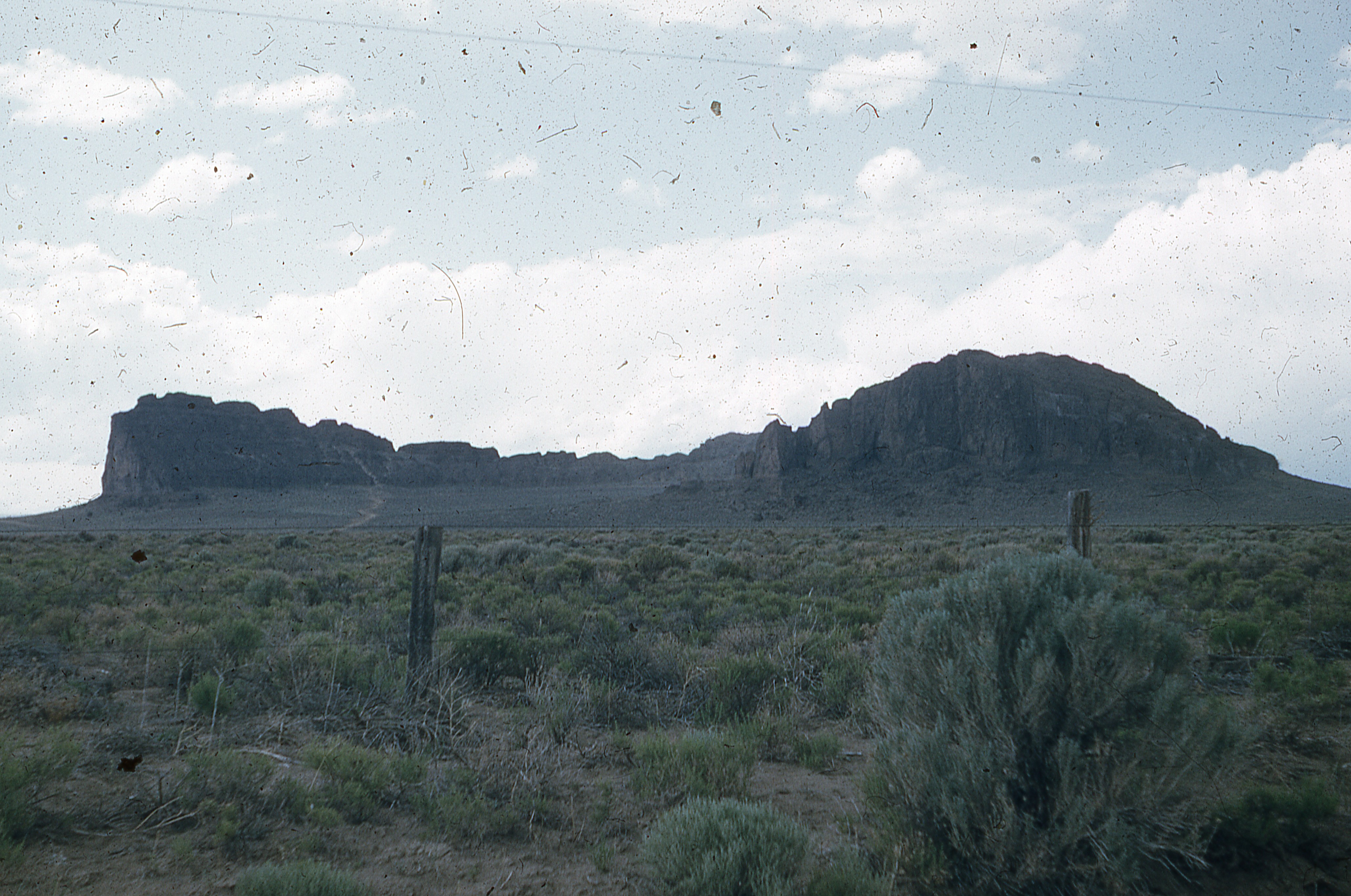
Ft. Rock from distance
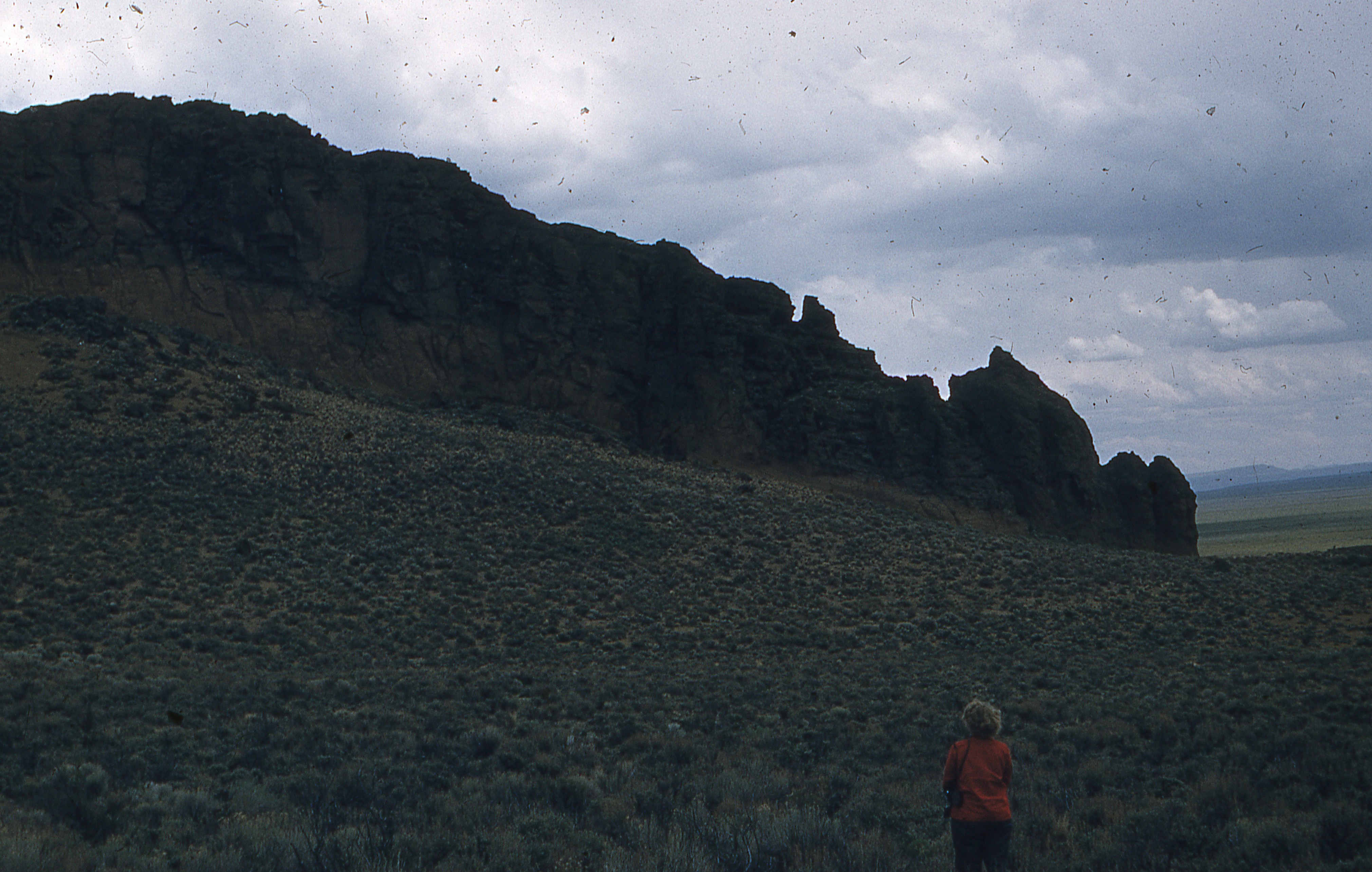
Lil + Fort Rock

Larry Currier at Ft. Rock
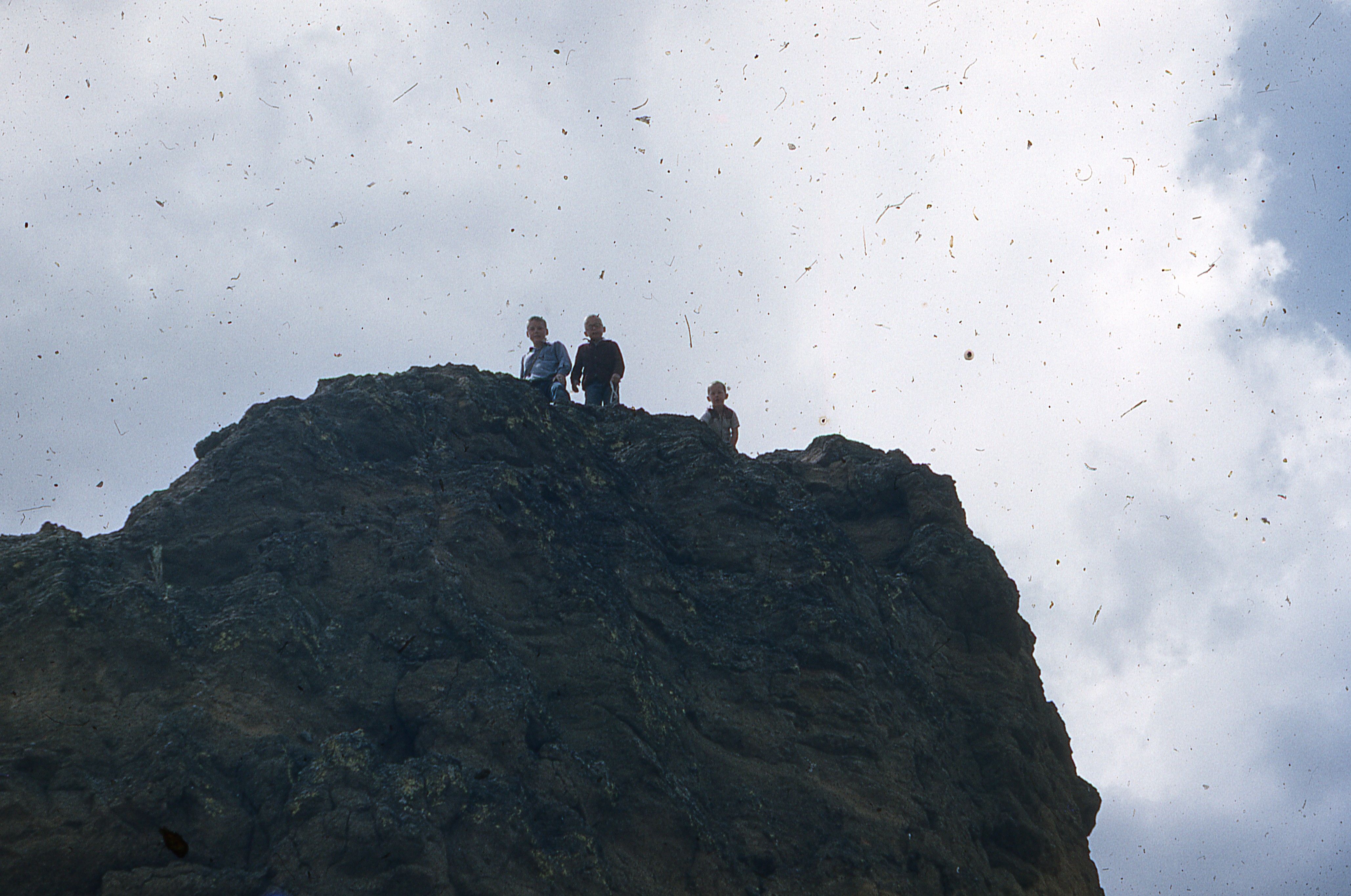
Currier kids
The entire collection that has been scanned and uploaded so far can be found here.
Friday, March 27, 2020
A Virus Worse Than the One from Wuhan

The Wuhan virus pandemic may teach us many new lessons before it’s over—in science, hygiene, interpersonal relations, economics, and more—but one thing is plainly evident already. Socialists need to self-isolate.
They are learning nothing from the crisis. Indeed, these righteous opponents of exploitation are exploiting it to promote their stale, toxic brew of concentrated state power as the solution to every problem—even when the state itself is complicit in the problem’s severity.
For example: “In pandemics, we are all socialists,” declares Ross Barkan in City and State magazine. Sorry, Ross, but you don’t speak for me. I’m not about to shun one virus and embrace an even worse one. Barkan thinks profit is the problem in health care and if we just turn the whole thing over to the federal government, we can eliminate profit and all get better health care for “free.”
But wait, there’s more! Just when you thought a virus calls for maybe medication or face masks, doctor-wannabe Barkan says it cries out for “rent stabilization available to anyone” and government ownership of utilities. That’s right. Illness in the land? Seize the power company!
Former bartender, now expert-on-everything Alexandria Ocasio-Cortez declares that measures to combat the virus must include “making moves on paid leave, debt relief, waiving work req’s (requirements), guaranteeing healthcare, UBI (Universal Basic Income), detention relief,” etc. You’d think the federal government must be stricken with a bad case of a budget surplus and disappearing debt.
The amazingly accomplished problem-fixer Bernie Sanders took time out from selfless public service to claim that the pandemic is proof we have too many competing insurance companies. (Do you follow that?) Replace them, he says, with just one big one in Washington that dispenses Medicare for All. He freely admits he neither knows nor cares how many tens of trillions of dollars that might cost. Coincidentally, that’s precisely the same attitude my rat terriers take regarding their vet bills.
Boasting a resume no more complicated than “social activist,” Alexis Isabel shamelessly pronounces over her avocado toast that “this pandemic is showing how the US has failed by promoting individualism instead of collectivism.” Somebody please inform her that the virus originated in one-party, collectivist China, whose regime lied about it and jailed individual dissidents who tried to warn us about it.
Yes, these reactions to the pandemic confirm my worst fears about socialists. They are quacks, snake-oil salesmen, con men, shysters. While others are pouring out their hearts and treasures to actually help suffering people and solve a calamity, these pontificating mountebanks are proposing remedies akin to medieval blood-letting.
To socialists, I say: Here’s the kind of emergency in which you can shine. No need to wait for government action. In this panic environment, you can show the way! All you have to do is get your virus-free comrades together, sell your possessions and share the proceeds communally. If this form of “brotherhood” ever had a chance of success, surely it’s now. In a disaster scenario, people are willing to give just about anything a whirl.
Once you’ve assembled, then you can tax each other to your heart’s content. You can impose regulations on yourselves, the more the merrier. If you catch anybody getting rich by creating wealth for somebody without permission, you can vilify and expel them. You can even write personal checks to the government; indeed, send them everything you’ve got, if you want. The country will marvel at the example you’ll set.
Nothing prevents socialists from doing any of these things by voluntary agreement amongst themselves. That’s one of the great advantages of capitalism: You and your willing friends can practice socialism if you so desire, whereas a great disadvantage of socialism is that you can’t practice capitalism until socialism fails so miserably that even its sycophants throw in the towel.
But a safe bet is that in a world of some eight billion people, not a single socialist will make the slightest attempt to do any of these things. The whole idea of socialism—which explains the inherent hypocrisy of its advocates—is not to freely practice what you preach. It’s to use power to force others to practice what you preach.
No doubt that extraordinary moments require extraordinary responses, even from government. A case can be made that at least some measures to combat an invasive virus is a matter of national defense, the most legitimate purpose of government and the one that socialists are usually the most reluctant to support. The point of this article is not to offer all the right answers even if I knew what they were, but rather, to warn us all not to lose our heads, or inflate the capabilities of the state, or welcome a heap of new problems by drawing the wrong conclusions and imposing non-sequiturs as long-term policy.
In a powerful commentary in the March 20 edition of The Wall Street Journal, Kimberley Strassel puts it bluntly:
Here’s the lesson of the virus so far: Relying solely on government bureaucracy is insane. To the extent America is weathering this moment, it is in enormous part thanks to the strength, ingenuity and flexibility of our thriving, competitive capitalist players.“Drug companies,” notes Strassel, “will save lives, even as Bernie Sanders is denouncing them.”
If the pandemic truly argues for a short-term boost in government spending, let’s remember that near-record peacetime deficits in a booming economy (mostly for stuff socialists favor and demand more of) put us in a terrible financial position to afford new spending. For its fiscal insanity, the federal government deserves not more power, money, and cult-like worship but the harshest calumny for its hopeless mismanagement.
Before we embrace more government to bail out a sinking private sector, let’s pause and appreciate that it’s the private sector—even in a crisis—that bails out the government sector every day of the week. Where would government be if there wasn’t a private sector to pay its taxes and buy its burgeoning debt? How much could it spend if private people and businesses didn’t earn it in the first place?
We should be naturally suspicious of any ideology that requires a deadly, worldwide pandemic to make its case superficially viable, if only for the short-term. Surely, the need to stuff the statist genie back in the bottle when this is over will be existentially urgent, or the long-term cost to our liberties and economy could outweigh any short-term victories against the virus. Yet, the collectivists are telling us that they want pandemic-like behavior from government now and forever, crisis or no crisis.
In the 14th Century, the Black Death wiped out about a third of the European population. In those superstitious times, governments responded in many counterproductive ways. But fortunately, the world did not descend into a permanent Dark Age. Centers of power and coercion actually began to break down as early as the Renaissance of the 15th Century, followed by the Reformation of the 16th and the Enlightenment of the 18th. The world was unimaginably freer in the 19th than it ever was before, and more prosperous by many orders of magnitude because of it. Socialism could have institutionalized the misery of the Black Death but fortunately the world was smart enough to move in other directions.
Socialism is an intellectual virus, and it’s more deadly than the one from Wuhan. There are hordes of Venezuelans, Cubans, North Koreans and former East-bloc citizens who attest to that. If anyone needs a short refresher course on the topic, here’s a list of recent articles that raise questions about government’s role in the present emergency instead of blindly endorsing its dubious and massive expansion:
- "A Government Monopoly Led to Botched COVID-19 Test Kits, But Private Labs are Now Saving the Day" by Ben Johnson
- "Coronavirus Vindicates Capitalism" by Kimberley Strassel
- "Vital Covid-19 Facts Everyone Should Know" by James Agresti:
- "Panic Has Led to Government “Cures” That Are Worse than the Disease" by Jon Miltimore
- "Stimulus Spending Won’t Stop the Economic Fallout from the Coronavirus" by Daniel J. Mitchell
- "A Coronavirus Counter-factual: What If Government Had Done Nothing?" by John Tamny
- "What Libertarians Would Do in Response to Coronavirus" by Bonnie Kristian
- "Shuttering Farmers Markets Over Covid-19 is Stupid, Dangerous and Counterproductive" by Baylen Linniken
- "States Can’t Shut Down Non-Essential Businesses Without Harming Essential Ones" by Eric Boehm
- "America, With Coronavirus, Gets a Taste of Socialism" by Cheryl K. Chumley
- "We Didn’t Have to Have Ventilator Shortage—Leaders Chose Not to Prep for Pandemic" by Betsy McCaughey
Lawrence W. Reed
Lawrence W. Reed is President Emeritus, Humphreys Family Senior Fellow, and Ron Manners Ambassador for Global Liberty at the Foundation for Economic Education. He is also author of Real Heroes: Incredible True Stories of Courage, Character, and Conviction and Excuse Me, Professor: Challenging the Myths of Progressivism. Follow on Twitter and Like on Facebook.This article was originally published on FEE.org. Read the original article.
Wednesday, March 25, 2020
Tuesday, March 24, 2020
Game Players (February 1994)

Game Players (February 1994)
Pele! is a soccer game that was released for the Sega Genesis in 1993 and named for the famous Brazilian player. I don't recall ever playing this one or even seeing it at the time so I don't believe this was one of the more popular choices for a soccer game.

From the description, it sounds as if this game was very realistic for the time, including accurate rules and various moves that were all well animated. However, Pele! seemed to get mediocre reviews for the most part. Part of the problem may be the odd two-player mode. Instead of just being able to face off against another player, each player had to compete in a series of one-player matches in order for their teams to face-off in the tournament.

Interestingly, the a Pele soccer game had been previously released on the Atari 2600 years before though it bears little resemblance to its Genesis namesake. There was also a sequel to Pele! on the Genesis called Pele 2: World Tournament Soccer that was released in 1994 to coincide with the 1994 World Cup in the United States.

If you want to play Pele! you will have to track down a Genesis and an original cartridge or use emulation. However, most 'realistic' sports games don't age all that well and I don't think this one is an exception.
Thursday, March 19, 2020
Vintage Photos - Oestreicher (645-648)
See the previous post in this series here.
I had the opportunity to pick up a huge batch of slides a while back. These are pictures span from as early as the late 1940s to as late as the early 1990s (maybe earlier and/or later but these are what I have sampled so far). These came to me second (third?) hand but the original source was a combination of estate sales and Goodwill. There are several thousand...maybe as many as 10,000. I will be scanning some from time to time and posting them here for posterity.
Apparently, getting your pictures processed as slides used to be a fairly common thing but it was a phenomenon I missed out on. However, my Grandfather had a few dozen slides (circa late 1950s) that I acquired after he died. That along with having some negatives I wanted to scan is what prompted me to buy a somewhat decent flatbed scanner that could handle slides and negatives, an Epson V600. It can scan up to four slides at a time with various post-processing options and does a decent enough job.
This set continues a rather large batch of slides that originally came from an estate sale and appear to have belonged to a locally well known photographer (or perhaps a close family member) from the Spokane Washington area and later Northern Idaho named Leo Oestreicher. He was known for his portrait and landscape photography and especially for post cards. His career started in the 1930s and he died in 1990. These slides contain a lot of landscape and portrait photos but also a lot of photos from day to day life and various vacations around the world. Here's an article on him from 1997 which is the only info I have found on him: http://www.spokesman.com/stories/1997/jan/04/photos-of-a-lifetime-museum-acquisition-of-leo/
Many of these slides had the date they were processed (presumably) stamped or printed on them. I've found that in cases where I could verify the date, either because a more specific date was hand written or there was something to specifically date the photo in the photo itself, that this date has typically been the same month the photos were taken. In other words, I expect that in MOST cases these photos were taken relatively near the processing date. No doubt there are some exceptions.
Click on one of the images or the link below to also see versions processed with color restoration and Digital ICE which is a hardware based dust and scratch remover, a feature of the Epson V600 scanner I am using. There are also versions processed with the simpler dust removal option along with color restoration.
Only the first photo in this set is labeled. It is labeled as the "Interior of Ft. Rock. Fort Rock is a volcanic landmark in Lake County, Oregon. The second two photos are also outdoors shots with one being of the ocean and the other a farm field somewhere. The final shot shows a train track and some houses. I'm guessing these were taken in the late 1950s or early 1960s.

Interior at Ft. Rock


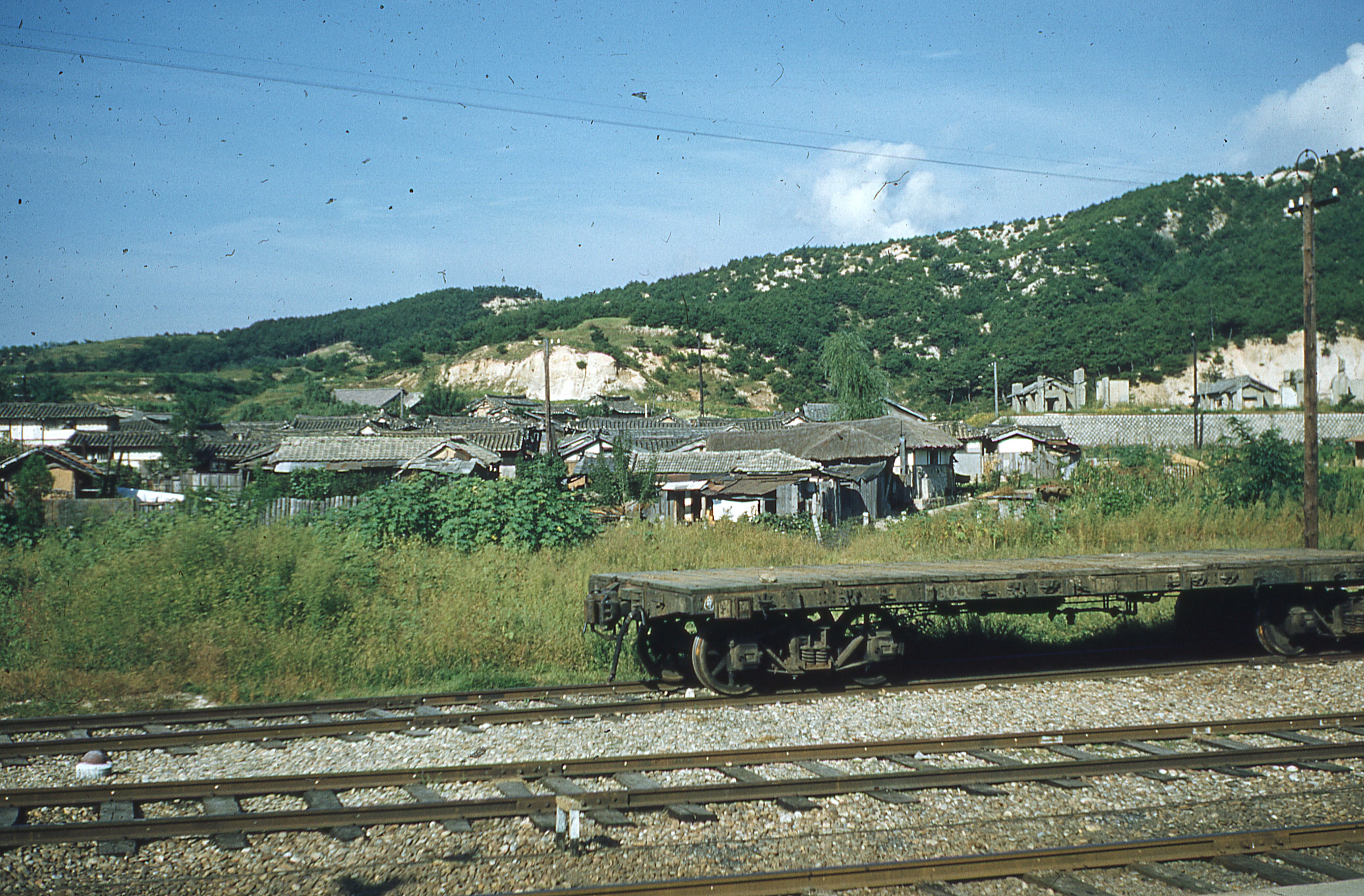
The entire collection that has been scanned and uploaded so far can be found here.
Joe Biden: Father of the Drug War’s Asset Forfeiture Program

Expanding Asset Forfeiture, Phase I: The RICO Act of 1970
Expanding Asset Seizure, Phase 2: Biden and the Comprehensive Crime Control Act of 1984
References
Tuesday, March 17, 2020
Monday, March 16, 2020
The One (October 1992)

The One (October 1992)
The One was a gaming magazine that covered multiple "16-bit" platforms. Eventually, it became exclusive to the Amiga (like in this October 1992 issue). This issue includes:
- News - US Gold release the first Amiga screenshots of Streetfighter 2 and Anco prepare for Kick Off 3's, er, kick off. PLUS news on Dune 2, Sensible Soccer V1.1 and Gunship 2000!
- Letters - It's payback time! The One's readers load both barrels and let rip!
- The End! - No, don't get worried - it's just a feature about end-game sequences, where we reveal the rhyme and reason behind some of the recent past's more memorable examples. Phew!
- Work In Progress - The Bitmaps finally take the wraps off their Chaos Engine, US Gold invite you to participate in its Legends of Valor and David Braben ponders on the future in the final leg of our massive Elite 2 saga.
- Win A Multimedia Amiga!
- Reviews - Look yonder for the full run-down of this month's goodies but suffice to say that they're hot, hot hot!
- Kill Zone - No longer detachable, but still a damn fine read.
- Cheapos! - Got some loose change burning a hole in yer pocket? Then cast your eyes over these offerings...
- Diary of A Game - Braybrook's back - and he's baaad!
- PD Zone - Cheaper than Cheapos, there's some right little crackers on offer this month, including a brilliant Donkey Kong clone!
- Compo - It's time to think about the future, and that's why Psygnosis are offering this superb Amiga CDTV complete with add-on keyboard and floppy drive as the prize in their great Beast 3 compo!
- Putty - Something like four centuries in the making, System 3 finally launch the game starring their perfectly pliable platform hero. And - hooray! - it's a right hoot!
- Kill Zone - You may not be able to pull it out this month, but you still can't beat it. Some of the best tips this side of Spatula VI, planet of the tipsters. Highlights include a Dune guide, Lure of the Temptress hints and tips and the start of our Eye of the Beholder 2 complete solution. Plus the shock departure of Dr. Upchurch from the Surgery!
- Previews - Gary Whitta shows you what's coming your way in the future - and you don't even have to cross his palm with silver!
- Games Index - It's big, it's beautiful and it's totally invaluable to the beleaguered software hunter. Yes, the cream of the releases from the last eight months or so is here for your perusal.
- Legends of Valor - US Gold is saying that this'll be the ultimate RPG of all time. An the interesting thing is it looks like they just might be right!
...and more!
Friday, March 13, 2020
Vintage Photos - Oestreicher (641-644)
See the previous post in this series here.
I had the opportunity to pick up a huge batch of slides a while back. These are pictures span from as early as the late 1940s to as late as the early 1990s (maybe earlier and/or later but these are what I have sampled so far). These came to me second (third?) hand but the original source was a combination of estate sales and Goodwill. There are several thousand...maybe as many as 10,000. I will be scanning some from time to time and posting them here for posterity.
Apparently, getting your pictures processed as slides used to be a fairly common thing but it was a phenomenon I missed out on. However, my Grandfather had a few dozen slides (circa late 1950s) that I acquired after he died. That along with having some negatives I wanted to scan is what prompted me to buy a somewhat decent flatbed scanner that could handle slides and negatives, an Epson V600. It can scan up to four slides at a time with various post-processing options and does a decent enough job.
This set continues a rather large batch of slides that originally came from an estate sale and appear to have belonged to a locally well known photographer (or perhaps a close family member) from the Spokane Washington area and later Northern Idaho named Leo Oestreicher. He was known for his portrait and landscape photography and especially for post cards. His career started in the 1930s and he died in 1990. These slides contain a lot of landscape and portrait photos but also a lot of photos from day to day life and various vacations around the world. Here's an article on him from 1997 which is the only info I have found on him: http://www.spokesman.com/stories/1997/jan/04/photos-of-a-lifetime-museum-acquisition-of-leo/
Many of these slides had the date they were processed (presumably) stamped or printed on them. I've found that in cases where I could verify the date, either because a more specific date was hand written or there was something to specifically date the photo in the photo itself, that this date has typically been the same month the photos were taken. In other words, I expect that in MOST cases these photos were taken relatively near the processing date. No doubt there are some exceptions.
Click on one of the images or the link below to also see versions processed with color restoration and Digital ICE which is a hardware based dust and scratch remover, a feature of the Epson V600 scanner I am using. There are also versions processed with the simpler dust removal option along with color restoration.
None of these are labeled or dated but I think they are from the late 1950s. The first two show University Methodist Church which I think is/was in Columbus, Ohio. I can't quite completely read the sign but it looks like it was advertising a Sunday service in July. The third photo shows the birthplace of Thomas Edison which is in Milan, Ohio. This is likely from before it was classified as a National Historic Landmark or added to the National Register of Historic Places which happened in 1965 and 1966 respectively. The final photo is slightly less interesting. It appears to be a Koi pond somewhere...




The entire collection that has been scanned and uploaded so far can be found here.
Thursday, March 12, 2020
Hudson Soft (1990)

Hudson Soft (1990)
Hudson Soft was truly one of the great video game companies. It's origins started with personal computer byproducts all the way back in the mid 1970s but most game players would probably know them for their Nintendo games or perhaps one of the most underrated video game consoles of all time, the TurboGrafx-16 (or PC-Engine as it was known outside of North America). To be fair, it was a huge success in Japan, it's just that it was rather underrated in the U.S. The ad above is from the first issue of SWAT Pro from the Fall of 1990. The TurboGrafx-16 had been released relatively recently but clearly Hudson Soft's catalog of games for the NES was still hugely important as this ad features a whole bunch of them. I've played some of these but there are a couple I always really wanted to play based on their ads but still haven't. Milon's Secret Castle and Medel Palace come to mind. In addition to those systems, Hudson Soft developed games for many other systems over the years including the Super Nintendo, Game Boy, Nintendo 64, Xbox 360, etc. Some of these were developed for other publishers. For instance, Hudson Soft was responsible for the development of Mario Party 1-8 (and 9 was developed primarily by former Hudson Soft employees). Hudson Soft was bought out by Konami in 2012 so Hudson Soft does not exist any more. Konami has the rights to Hudson Soft's back catalog but unfortunately haven't done a whole lot with it besides some Virtual Console releases.
Wednesday, March 11, 2020
Declaring Health Care “Universal” Doesn’t Make It So

"Universal health coverage is defined as ensuring that all people have access to needed health services (including prevention, promotion, treatment, rehabilitation, and palliation) of sufficient quality to be effective while also ensuring that the use of these services does not expose the user to financial hardship."
– World Health Organization
WHO’s definition describes the ideal outcome for a healthcare system. In other words, it is a goal, not a means. Often, however, universal healthcare refers to a government action or policy, or a specific way of producing health care. Much of the healthcare debate equivocates between using “universal” to describe an outcome, or alternatively, a government action.
Many (if not all) countries which are typically said to have universal healthcare, do not meet WHO’s criteria. Take Canada as an example. A paper put out by the Fraser Institute estimated around 44,000 people died over a 16 year period due to wait times. Obviously, if a person dies while waiting for treatment, then they did not have access to the care they needed.
Canada is not an exception. Researchers concluded that delayed access to a hospital bed led to approximately 5,500 deaths in the UK over the course of 3 years. In a hospital in Sweden last year, only 20% of cancer patients received treatment within the recommended time period. It seems likely that even if a system is doing quite well, there will still be at least a few people who fall through the cracks. Even in the top-tier Swiss system which mandates purchasing health insurance and provides subsidies for those who can’t afford it, there still remains 0.5% of the population who have no health insurance. This does not meet WHO’s criteria for “all people” if we are to interpret it in a strict manner.
Yet curiously, these countries are well-known to have “universal healthcare”. So what’s going on? Well, the definition of universal healthcare is constantly in flux. On one hand, a country’s healthcare system is called universal if the government enacts certain policies. See Wikipedia’s definition for instance:
The common denominator for all such programs is some form of government action aimed at extending access to health care as widely as possible and setting minimum standards.
Then, after it has been established these countries have universal coverage, a proponent can switch to WHO’s definition, which is based on the outcome of the system. The implicit assumption then, is that government actions aimed at a goal automatically produce that goal. But as we have seen in the aforementioned countries, intentions are quite different than outcomes.
Moreover, this equivocation causes most people to overlook the possibility of a non-government system that could achieve or come close to the noble goal spelled out in WHO’s definition. Affordable access to medical care can be made possible through a freed market that drives down prices, supplemented with charitable activity and mutual aid. Before the advent of significant government intervention in the US healthcare industry, mutual aid organizations had already made inexpensive medical care available to the poor and working class.
If universal healthcare means affordable access to all, then there is no reason to oppose it. It is in fact, an honorable goal. If, however, it refers to a specific government policy, then it is up for debate whether good outcomes are likely, and not at all a given. At the very least, the equivocation between the two definitions must end if there is to be any honest discussion.
This article is republished from the Principled Libertarian.
Andrew Kern
Andrew Kern is the author of The Myth of the Social Contract: Refuting Common Arguments for Government Authority, and he has written on libertarianism, anarchism, and private alternatives to state authority. He founded The Principled Libertarian website in 2017 with the goal of spreading the ideas of liberty and helping to define what it means to be free. His work has been published by Antiwar.com, the Ludwig von Mises Institute, the Foundation for Economic Education, Being Libertarian, and others. You can follow him here.This article was originally published on FEE.org. Read the original article.
Vintage Photos - Oestreicher (637-640)
See the previous post in this series here.
I had the opportunity to pick up a huge batch of slides a while back. These are pictures span from as early as the late 1940s to as late as the early 1990s (maybe earlier and/or later but these are what I have sampled so far). These came to me second (third?) hand but the original source was a combination of estate sales and Goodwill. There are several thousand...maybe as many as 10,000. I will be scanning some from time to time and posting them here for posterity.
Apparently, getting your pictures processed as slides used to be a fairly common thing but it was a phenomenon I missed out on. However, my Grandfather had a few dozen slides (circa late 1950s) that I acquired after he died. That along with having some negatives I wanted to scan is what prompted me to buy a somewhat decent flatbed scanner that could handle slides and negatives, an Epson V600. It can scan up to four slides at a time with various post-processing options and does a decent enough job.
This set continues a rather large batch of slides that originally came from an estate sale and appear to have belonged to a locally well known photographer (or perhaps a close family member) from the Spokane Washington area and later Northern Idaho named Leo Oestreicher. He was known for his portrait and landscape photography and especially for post cards. His career started in the 1930s and he died in 1990. These slides contain a lot of landscape and portrait photos but also a lot of photos from day to day life and various vacations around the world. Here's an article on him from 1997 which is the only info I have found on him: http://www.spokesman.com/stories/1997/jan/04/photos-of-a-lifetime-museum-acquisition-of-leo/
Many of these slides had the date they were processed (presumably) stamped or printed on them. I've found that in cases where I could verify the date, either because a more specific date was hand written or there was something to specifically date the photo in the photo itself, that this date has typically been the same month the photos were taken. In other words, I expect that in MOST cases these photos were taken relatively near the processing date. No doubt there are some exceptions.
Click on one of the images or the link below to also see versions processed with color restoration and Digital ICE which is a hardware based dust and scratch remover, a feature of the Epson V600 scanner I am using. There are also versions processed with the simpler dust removal option along with color restoration.
All of these photos were taken at a wedding in February 1958, I believe in Columbus, Ohio. There have been a number of photos from this wedding scattered throughout these slides. I believe the exact date of the wedding is included in one or more previous sets but it escapes me at the moment.

Punch table with bride & groom - processed February 1958

Reception table - processed February 1958
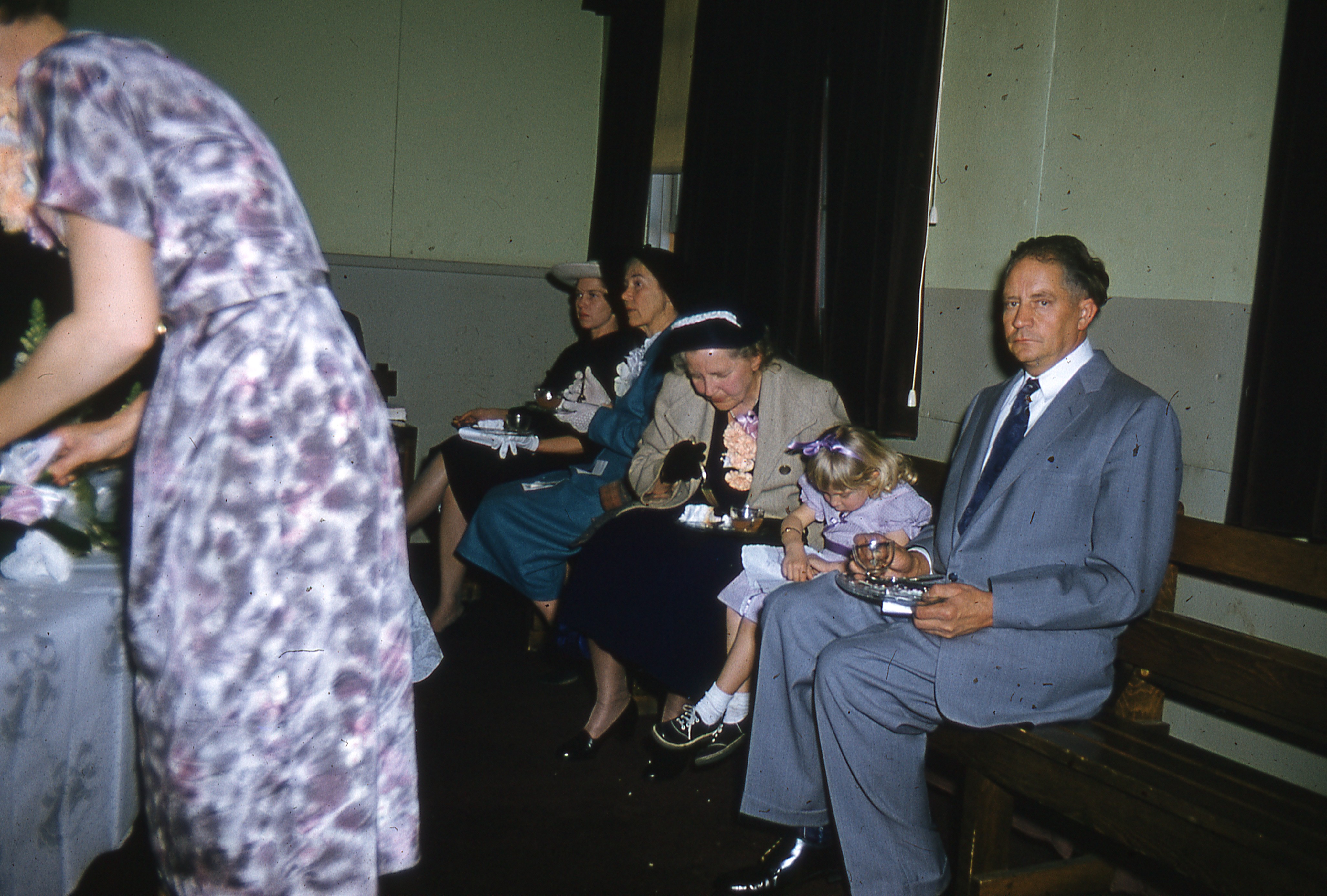
Mrs. Potter & Miller at reception - processed February 1958
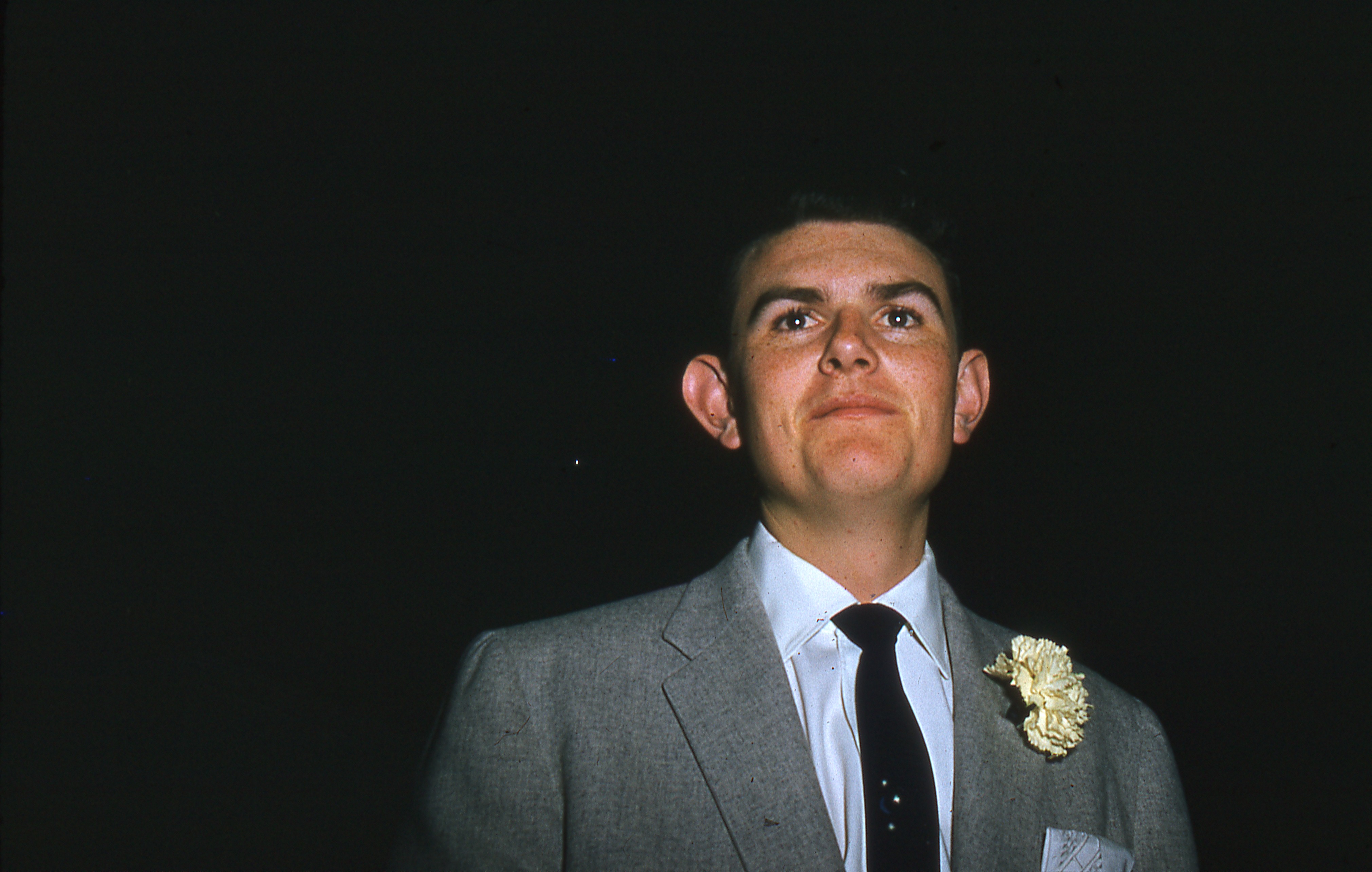
processed February 1958
The entire collection that has been scanned and uploaded so far can be found here.
Tuesday, March 10, 2020
The One (February 1989)

The One (February 1989)
The One is a gaming magazine that was published in the U.K. in the late 1980s and early 1990s. It specialized in computer games, particularly the Amiga, Atari ST and PC (DOS). The February 1989 issue includes:
- Letters - Join June and Terry in another half-hour of hilarity. This week there are lots of saucy goings on when Terry loses his trousers and the vicar comes to tea.
- News - Electronic Arts creates Holy War in the form of Bullfrog Productions' Populous. Grand-slam's Schwarzenegger tie-in is up and running, Addictive's theatrically-inspired Kristal makes its debut and Gauntlet II finally makes it to the Amiga.
- Reviews - Thirty-five thrifty folios...
- 20,000 Leagues Under The Sea (Coktel Vision)
- Baal (Psyclapse)
- California Games (Epyx)
- Circus Games (Tynesoft)
- Cosmic Pirate (Outlaw)
- Custodian (Hewson)
- Dragon's Lair (Readysoft/Entertainment International)
- Galactic Conqueror (Titus)
- Hell Bent (Novagen)
- Last Duel (U.S. Gold)
- Mission Elevator (Axxiom)
- Night Hunter (UbiSoft)
- Skate Or Die (Electronic Arts)
- Wanted (Infogrames)
- Play Guide - Gary Whitta armors up to help the beleaguered commando through Ocean's Opeartion Wolf.
- Demos - Fred Astaire heads an all-star cast including Rob Hubbard and Atari Juggler.
- Arcades - A mixed bag of coin operated corkers, including the long-awaited sequel to Taito's Double Dragon and Capcom's Ghosts 'n' Goblins.
- Feature - Paul Boughton explores the future world of William Gibson's Cyberpunk classic, Neuromancer, and meets the team behind the computer conversion, Interplay Productions.
Musya: The Classic Japanese Tale of Horror (Super Nintendo)

Musya: The Classic Japanese Tale of Horror (Super Nintendo)
Musya is a side scrolling action/horror game that made its way to the Super Nintendo in the U.S. in 1992. The plot is a fairly typical save the princess from an evil power type of thing. Apparently, she was keeping a talisman safe that kept "The Evil One" locked away in an abyss. Apparently, she couldn't keep herself safe though...



Vintage Photos - Oestreicher (633-636)
See the previous post in this series here.
I had the opportunity to pick up a huge batch of slides a while back. These are pictures span from as early as the late 1940s to as late as the early 1990s (maybe earlier and/or later but these are what I have sampled so far). These came to me second (third?) hand but the original source was a combination of estate sales and Goodwill. There are several thousand...maybe as many as 10,000. I will be scanning some from time to time and posting them here for posterity.
Apparently, getting your pictures processed as slides used to be a fairly common thing but it was a phenomenon I missed out on. However, my Grandfather had a few dozen slides (circa late 1950s) that I acquired after he died. That along with having some negatives I wanted to scan is what prompted me to buy a somewhat decent flatbed scanner that could handle slides and negatives, an Epson V600. It can scan up to four slides at a time with various post-processing options and does a decent enough job.
This set continues a rather large batch of slides that originally came from an estate sale and appear to have belonged to a locally well known photographer (or perhaps a close family member) from the Spokane Washington area and later Northern Idaho named Leo Oestreicher. He was known for his portrait and landscape photography and especially for post cards. His career started in the 1930s and he died in 1990. These slides contain a lot of landscape and portrait photos but also a lot of photos from day to day life and various vacations around the world. Here's an article on him from 1997 which is the only info I have found on him: http://www.spokesman.com/stories/1997/jan/04/photos-of-a-lifetime-museum-acquisition-of-leo/
Many of these slides had the date they were processed (presumably) stamped or printed on them. I've found that in cases where I could verify the date, either because a more specific date was hand written or there was something to specifically date the photo in the photo itself, that this date has typically been the same month the photos were taken. In other words, I expect that in MOST cases these photos were taken relatively near the processing date. No doubt there are some exceptions.
Click on one of the images or the link below to also see versions processed with color restoration and Digital ICE which is a hardware based dust and scratch remover, a feature of the Epson V600 scanner I am using. There are also versions processed with the simpler dust removal option along with color restoration.
These photos are unlabeled except for dates. The first was processed in July 1968 and was probably taken around that time. It is a very blurry photo and appears to be of a tandem rotor helicopter, probably a Chinook. No idea where this is though. The second photo was taken in July 1965 and other that it's some guy standing in the woods I don't really know what I'm looking at. The third and fourth photos were taken in April 1965 and were taken at a church service.

processed July 1968

July 1965
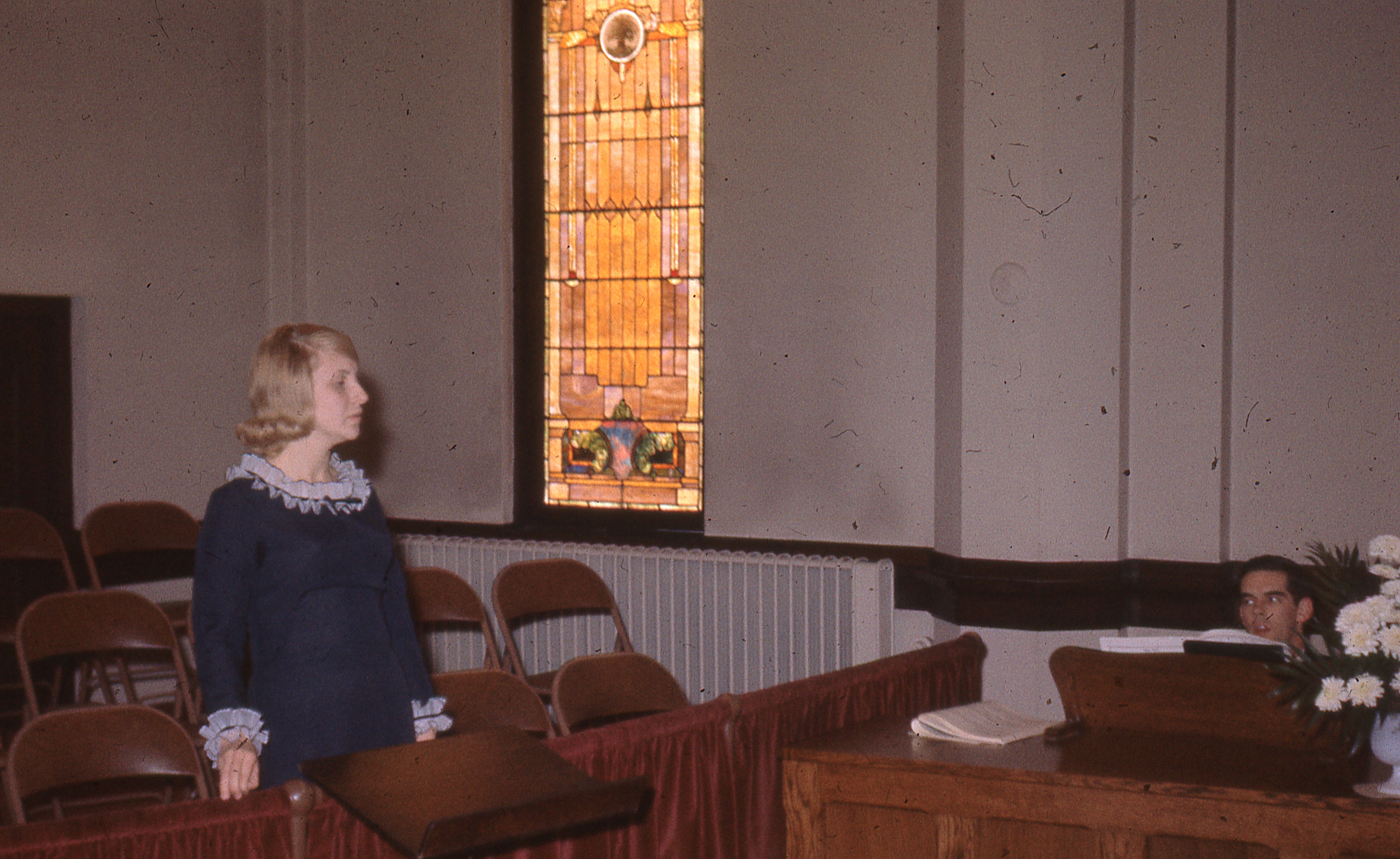
April 1965
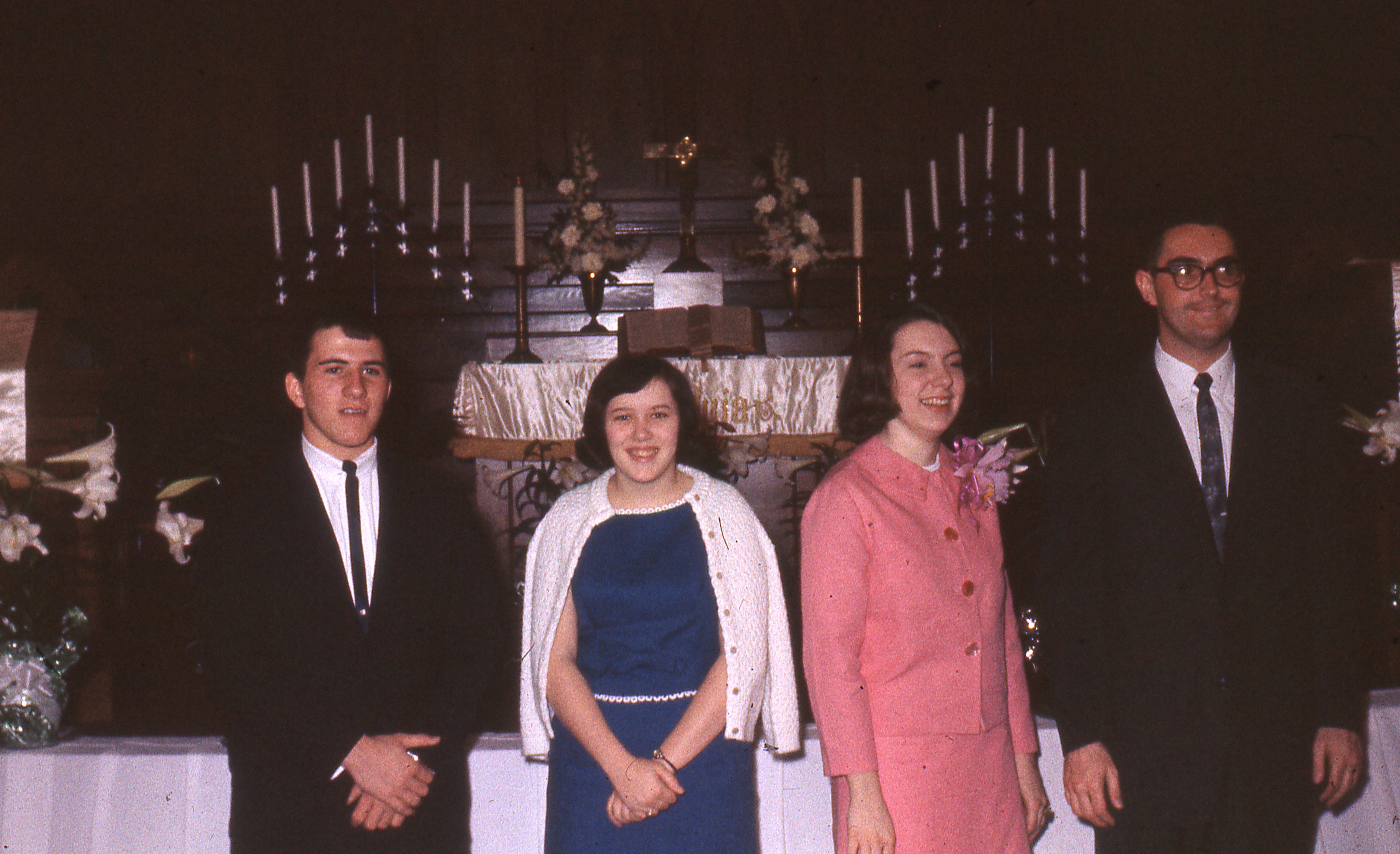
April 1965
The entire collection that has been scanned and uploaded so far can be found here.
Mega Drive Advanced Gaming (November 1992)

Mega Drive Advanced Gaming (November 1992)
Sega Mega Drive Advanced Gaming is a magazine that was dedicated to the Sega Genesis (or Mega Drive as it was known elsewhere) and published in the U.K. The November 1992 issue includes:
- CD Feature - We tell you everything you ever wanted to know about the Mega Drive CD ROM system but were afraid to ask. What games can you look forward to? How does it work? Just read on...
- Comic Culture - Japanese comic culture looks set to take over the world! We see how one of the world's largest mass market publishing phenomena affects the Mega Drive.
Regulars
- News - Final Fight, Land Stalker, Shadow of the Beast II, Road Rash II, Sensible Soccer, John Madden '93...
- Star Play - British Formula One driver Johnny Herbert takes a look at Ayrton Senna's Super Monaco GP II.
- Oop Yer Way - This month we subject the customers of the Virgin Megastore in London to our interrogation.
- Mega File - The best and the worst of the beat'em-up genre are explored this month in full gory glory.
- Megaphone - Not satisfied with proving just how totally illiterate they are, our readers now feel the need for a more artistic outlet. Scribblings and scrawlings galore!
- Ayrton Senna's Super Monaco - Four pages of guidance for this tricky little racing game. All of the maps and tactics you'll need to be world champ!
- Batman - Check out our complete solution to the Caped Crusader's first platform beat'em-up bout on the Mega Drive.
- Dungeons and Dragons - Gerry and Dave's two part epic guide begins this month with the initial stages of this massive game. Maps and tips galore!
- Krusty's Super Fun House - Enlisting the help of Control's Mr. Simmons we endeavor to bring you the definitive guide to Krusty's rat bashing puzzler.
- The Terminator - Uzi 9mm...Sorry, what I meant was here's everything you'll need to complete Virgin's Arnie basher.
- Alien 3
- Aquabatics
- Galahad
- Gods
- Greendog
- Indiana Jones
- LHX Attack Chopper
- MEGA-lo-MANIA
- NHLA Hockey '93
- Powerball
- Predator II
- Side Pocket
- Thunder Storm FX
Monday, March 9, 2020
Thursday, March 5, 2020
The Anti-Capitalists Are (Still) Wrong about History—and Much More

The [American] Dream is not dead, and we shouldn’t let a populist scream convince us otherwise. Americans living today have every reason to be optimistic—and grateful.Capitalism has become the preferred whipping boy of those calling for more government involvement in markets. The statists love to begrudge it and the wealthy wokes love to downplay it. Whether it’s income inequality or the growing power of big tech, “late capitalism” is a term employed by those who would like to eliminate or greatly reduce private ownership and usher in an era of redistribution.
– Michael Strain, American economist
But is capitalism really in its final gasps? And if so, where are we headed?
The notion of late capitalism has been around since Karl Marx began his assault on free enterprise in the 19th century, although the term was officially coined by German economist Werner Sombart in his 1902 book Der Moderne Kapitalismus. Marx believed that the proletariat would eventually revolt against the bourgeoisie due to the angst created by inequality and exploitation. For him, one of the most egregious injustices was wealth inequality. He believed private property was a major driver of inequality, effectively insulating the wealthy from giving workers their fair share.
Sound familiar? Senator Sanders has an entire policy trove of bad ideas built on the premise that wealthy Americans have exploited workers by weaponizing their possessions (property) for their own malignant greed.
Those suggesting capitalism is in its final throes assume two things:
- Economic inequality equals injustice
- The existence of economic inequality means that capitalism must be replaced
A Tale of Two Inequalities
Unemployment in the United States is currently at the lowest level it has been since the 1960s. Not only is the economy creating more jobs, but wages are growing. And consider this: “wages for the bottom third of workers have risen at a 4.1 percent annual pace over the past two years versus 3.3 percent for the middle third and 3.6 percent for those at the top.”Workers are in such demand, especially in industries like healthcare and education, that an increasing number of companies are offering incentive packages to defray the cost of moving to a new job. When we consider the income mobility of Americans, with 95 percent of those at the bottom 20 percent not being there in 15 years, it becomes clear that wealth is transient in a market economy, providing a pathway for many to pursue the American Dream.
It’s important to note that regulatory and tax reform play a role in reducing wealth inequality. To be sure, nothing will create absolute wealth parity in a free market (nor should it), but the effects of deregulation and tax reform are instructive. Economist Michael Strain notes that from the start of the Great Recession until 2016, “inequality decreased by 7 percent” after accounting for taxes and transfers.
As the government’s demands on business and personal wealth are reduced, employers feel more comfortable investing in expansion, leading to more jobs that in turn create a demand for additional labor. This makes workers more attractive to prospective employers, bolstering job seekers with a competitive environment that enables them to be choosier employees.
Despite the free-market’s ability to create a more level playing field, however, some types of inequality will continue to exist. Economist Thomas Sowell notes that there are many contributors to inequality, saying, “there was never a reason to expect equality. [There are so] many different complicating factors, cultures matter, demographics matter, regions matter.”
For example, the average life expectancy of a man that lives in the mountains is a decade less than one that lives in the Virginia suburbs. Inequality is even evidenced in seemingly superficial matters, such as physical attractiveness, athletic aptitude, and musical ability. Not everyone can play like Patrick Mahomes or sing like Adele.
The Justice of Capitalism
There are few things more professionally distressing than seeing your hard work and earnest efforts thwarted by a system designed to quash competition. Unfortunately, this is the type of approach many protectionists on both the left and right take when it comes to economic policy. Through onerous regulation, occupational licensing restrictions, minimum wage laws, price controls, tariffs, and more, it can feel like the deck is stacked against you.By contrast, free enterprise is liberating and creates opportunity. The spread of capitalism and the promotion of free markets has led to a substantial decline in extreme poverty. In the 1980s, approximately 40 percent of the world’s population lived in extreme poverty. Today, that figure is 8.6 percent.
Even authoritarian regimes, like China, recognize the importance of limiting government intrusion in markets if they hope to be competitive in an increasingly globalized economy.
Capitalism has proven to be the best vehicle for economic justice for the marginalized and impoverished. Why would anyone want to deprive the poor of the mobility free enterprise affords?
Capitalism Today, Capitalism Tomorrow, Capitalism Forever?
If we look to public trust as an indication of capitalism’s viability, look no further than business, which holds “a massive 54-point edge over government as an institution that is good at what it does,” according to the Edelman Trust Barometer. It’s also worth noting that US economic confidence is the highest it has been in nearly 20 years.No, capitalism doesn’t appear to be going anywhere anytime soon. Instead of statists thumbing their noses at capitalism–oftentimes suggesting governments intervene–they’d be wise to exhibit a little intellectual humility and take a lesson from the efficiency and dynamism of the private sector.
The data is indisputable. Capitalism has been the primary driver of economic flourishing and innovation for nearly three hundred years, catapulting individuals, societies, and nations into levels of prosperity that were previously unfathomable. Capitalism respects the agency of people and communities, recognizing that they should be able to freely associate and trade as they see fit. Free market capitalism honors the natural right to private property.
But, even beyond these principles and big ideas, the practical matter is that so long as humans value prosperity, opportunity and innovation, capitalism won’t fade away. Free enterprise offers technological innovation that make products smarter, lighter, cheaper, and use less material.
Capitalism creates, socialism destroys.
Moving from free market capitalism toward a command economy is neither moral nor responsible. So long as free people choose action over apathy and liberty over serfdom, capitalism will continue to offer individuals the opportunity to pursue the American Dream.
Doug McCullough
Doug McCullough is a corporate attorney at the Texas law firm, McCullough Sudan, and is a director of the Lone Star Policy Institute. Doug is a co-host of The Urbane Cowboys, a podcast on policy, society, and innovation. He is a National Review Institute Regional Fellow and Better Cities Project Fellow. He is a regular contributor to Foundation for Economic Education, and has been published in Entrepreneur, The Hill, Washington Examiner, Arc Digital, Houston Chronicle, and San Antonio Express.This article was originally published on FEE.org. Read the original article.
Vintage Photos - Oestreicher (629-632)
See the previous post in this series here.
I had the opportunity to pick up a huge batch of slides a while back. These are pictures span from as early as the late 1940s to as late as the early 1990s (maybe earlier and/or later but these are what I have sampled so far). These came to me second (third?) hand but the original source was a combination of estate sales and Goodwill. There are several thousand...maybe as many as 10,000. I will be scanning some from time to time and posting them here for posterity.
Apparently, getting your pictures processed as slides used to be a fairly common thing but it was a phenomenon I missed out on. However, my Grandfather had a few dozen slides (circa late 1950s) that I acquired after he died. That along with having some negatives I wanted to scan is what prompted me to buy a somewhat decent flatbed scanner that could handle slides and negatives, an Epson V600. It can scan up to four slides at a time with various post-processing options and does a decent enough job.
This set continues a rather large batch of slides that originally came from an estate sale and appear to have belonged to a locally well known photographer (or perhaps a close family member) from the Spokane Washington area and later Northern Idaho named Leo Oestreicher. He was known for his portrait and landscape photography and especially for post cards. His career started in the 1930s and he died in 1990. These slides contain a lot of landscape and portrait photos but also a lot of photos from day to day life and various vacations around the world. Here's an article on him from 1997 which is the only info I have found on him: http://www.spokesman.com/stories/1997/jan/04/photos-of-a-lifetime-museum-acquisition-of-leo/
Many of these slides had the date they were processed (presumably) stamped or printed on them. I've found that in cases where I could verify the date, either because a more specific date was hand written or there was something to specifically date the photo in the photo itself, that this date has typically been the same month the photos were taken. In other words, I expect that in MOST cases these photos were taken relatively near the processing date. No doubt there are some exceptions.
Click on one of the images or the link below to also see versions processed with color restoration and Digital ICE which is a hardware based dust and scratch remover, a feature of the Epson V600 scanner I am using. There are also versions processed with the simpler dust removal option along with color restoration.
None of these photos were dated or labeled but I would guess they are from the late 1950s or perhaps early 1960s based on the cars I see in the 2nd photo below. The first photo is of a pot of flowers and figurines. The next three are of wintry outdoor scenes...cars houses and streets covered in snow and ice.




The entire collection that has been scanned and uploaded so far can be found here.





